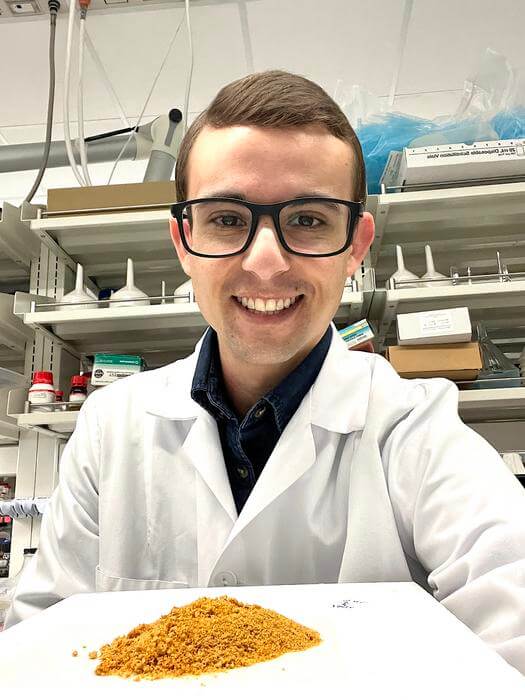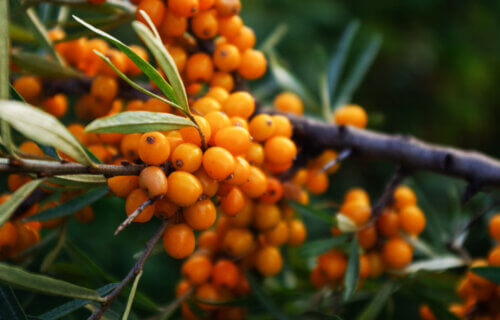💡What To Know:
- Berries from the sea buckthorn provide a healthy source of antioxidants.
- Buckthorn extracts show both antidiabetic and anti-obesity properties in lab tests.
- Sea buckthorn oil is also loaded with omega-3 fatty acids, vitamins, and polyphenols.
ST. JOHN’S, Newfoundland — Berries from the shrub sea buckthorn appear to be an untapped source of natural antioxidants, according to researchers from the Memorial University of Newfoundland. Grown in Canada, the study authors found a unique nutritional profile of sea buckthorn berries, revealing their tremendous potential as a bioactive-loaded superfood. Moreover, they may even help people dealing with diabetes or obesity.
The sea buckthorn is a thorny plant found all along the coasts of northwestern Europe and temperate regions of central Asia. The berries and leaves produced by the plant are widely used for their nutritional, pharmaceutical, and functional properties. For example, sea buckthorn oil is rich in omega-3 and omega-6 fatty acids, vitamins E, B, and A, and polyphenols.
In Canada, the plant was introduced in the early 2000s after a series of research projects enacted by governmental agencies focusing on the crop’s commercial potential.
“Sea buckthorn is a unique crop with vast potential for utilization. Popular in Asia and North-Western Europe, there is an opportunity to replicate this success in North America by leveraging the unique qualities of locally grown varieties,” says Renan Danielski, a PhD student at the University of Newfoundland and author of the study, in a media release.

Motivated by the experimental status and limited commercialization of sea buckthorn in North America thus far, researchers set out to characterize and better understand the unique composition of polyphenols, a class of compounds with antioxidative properties, found in Canadian cultivars.
“Understanding how our cultivar compares globally can help communicate the benefits to consumers and establish a market presence,” notes Fereidoon Shahidi, Professor of Biochemistry at Memorial University of Newfoundland and corresponding author of the study.
These findings highlight the presence of key polyphenolic compounds in sea buckthorn pomace and seeds. Each of those compounds offers potential health benefits ranging from cardiovascular protection to anti-inflammatory properties. Importantly, however, geographical factors influence the polyphenolic profile of sea buckthorn berries. Study authors identified several distinct compounds with enhanced bioactivity only found in the sea buckthorn cultivar grown in Newfoundland.
Moreover, the sea buckthorn extracts showed promising antidiabetic and anti-obesity potential in a lab, opening the door for further investigations into their mechanisms and potential therapeutic applications.
“This is a first step in understanding how sea buckthorn polyphenols can modulate our physiology in a beneficial manner. Future research needs to focus on understanding the mechanisms behind those effects and further experimentation using animal models and humans. If these effects are confirmed in vivo, we can envision the use of sea buckthorn polyphenols for therapeutic and pharmacological purposes, aiding in the prevention and treatment of diabetes, obesity, and many other conditions,” Danielski concludes.
In conclusion, the findings of this study pave the way for harnessing sea buckthorn berries as a valuable source of natural antioxidants in North America. As consumer interest in functional foods and “nutraceuticals” continues to increase, sea buckthorn may constitute a sustainable and health-enhancing option.
The study is published in the Journal of the Science of Food and Agriculture.
